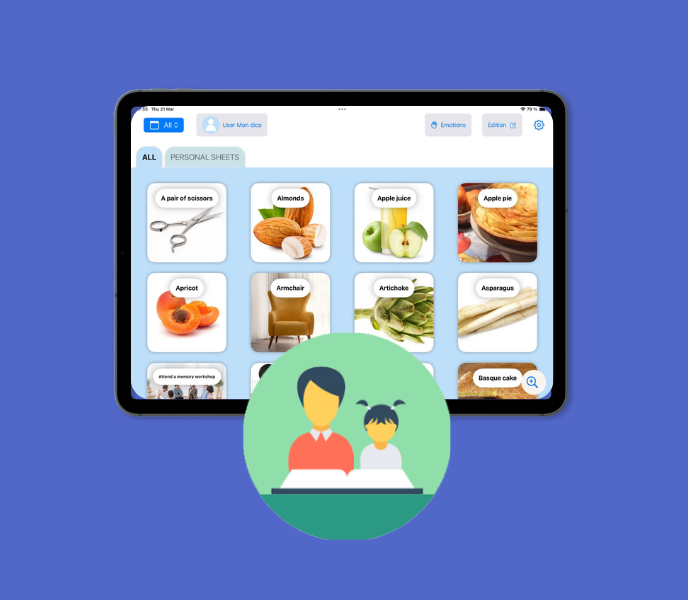Alternative communication refers to any method or system used by individuals who are unable to communicate verbally. This can include individuals with conditions such as autism, cerebral palsy, or other developmental disabilities. Alternative communication methods are essential for these individuals to express their thoughts, needs, and emotions, and to engage in social interactions. Without alternative communication, non-verbal individuals may experience frustration, isolation, and a lack of opportunities for personal growth and development.
Alternative communication is crucial for non-verbal individuals because it provides them with a means to express themselves and connect with others. It allows them to participate in social interactions, build relationships, and engage in educational and employment opportunities. By using alternative communication methods, non-verbal individuals can overcome the barriers they face in verbal communication and lead more fulfilling lives.
Understanding the Importance of Communication for Non-Verbal Individuals
Communication plays a vital role in social interaction for non-verbal individuals. It allows them to express their thoughts, feelings, and needs, and to understand others. Without effective communication, non-verbal individuals may struggle to form relationships and engage in meaningful interactions with their peers and the wider community.
Alternative communication methods provide these individuals with the tools they need to communicate effectively and participate fully in social activities.
In addition to social interaction, communication is also essential for education and employment opportunities. In an educational setting, non-verbal individuals need to be able to communicate with teachers and classmates to fully participate in learning activities. Without alternative communication methods, they may struggle to understand instructions or express their ideas and questions.
Similarly, in the workplace, effective communication is crucial for collaboration, problem-solving, and career advancement. Alternative communication methods enable non-verbal individuals to overcome these challenges and succeed academically and professionally.
Types of Alternative Communication Methods for Non-Verbal Individuals
There are several alternative communication methods available for non-verbal individuals. These methods can be tailored to the individual’s needs and abilities, and may include:
1. Augmentative and alternative communication (AAC) devices: AAC devices are electronic devices that allow non-verbal individuals to communicate through symbols, pictures, or text. These devices can range from simple picture boards to sophisticated speech-generating devices. AAC devices are highly customizable and can be programmed to meet the individual’s specific communication needs.
2. Picture exchange communication system (PECS): PECS is a visual communication system that uses pictures or symbols to represent words or phrases. Non-verbal individuals can use PECS by selecting and exchanging pictures to communicate their thoughts or needs. PECS is often used as a stepping stone to more advanced forms of communication, such as AAC devices or sign language. Dynseo developed My Dico, a visual dictionary with other features, adapted to non-verbal individuals, learn more.
3. Sign language: Sign language is a visual language that uses hand gestures, facial expressions, and body movements to convey meaning. There are different sign languages used around the world, such as American Sign Language (ASL) or British Sign Language (BSL). Learning sign language can provide non-verbal individuals with a rich and expressive means of communication.
4. Gestures and body language: Non-verbal individuals can also use gestures and body language to communicate their thoughts and needs. This can include pointing, nodding, shaking the head, or using facial expressions to convey emotions. While gestures and body language may not be as comprehensive as other alternative communication methods, they can still be effective in certain situations.

How to Choose the Right Alternative Communication Method for Non-Verbal Individuals
Choosing the right alternative communication method for a non-verbal individual requires careful consideration of their needs, abilities, and the context in which they will be communicating. Here are some factors to consider when selecting an alternative communication method:
1. Assessing the individual’s needs and abilities: It’s important to assess the individual’s specific communication needs and abilities. This can be done through evaluations conducted by speech-language pathologists or other professionals. Understanding the individual’s strengths and challenges will help determine which alternative communication method is most suitable.
2. Considering the environment and context: The environment in which the individual will be communicating should also be taken into account. For example, if the individual will primarily be communicating at home or in a familiar setting, a simpler alternative communication method such as PECS may be sufficient. On the other hand, if the individual will be communicating in a variety of settings, a more versatile method such as an AAC device may be more appropriate.
3. Consulting with professionals: It’s important to consult with professionals who specialize in alternative communication methods. Speech-language pathologists, occupational therapists, and assistive technology specialists can provide valuable guidance and recommendations based on their expertise and experience. They can help assess the individual’s needs, provide training and support, and assist with the selection and implementation of the chosen alternative communication method.
Benefits of Alternative Communication for Non-Verbal Individuals
Alternative communication methods offer numerous benefits for non-verbal individuals. These methods can significantly improve their quality of life and open up new opportunities for personal growth and development. Some of the key benefits include:
1. Improved social interaction and relationships: Alternative communication methods enable non-verbal individuals to engage in social interactions, build relationships, and connect with others.
Being able to express themselves and understand others, make them participating more fully in social activities and forming meaningful connections with their peers, family members, and community.
2. Enhanced learning and education: Effective communication is essential for learning and education. Alternative communication methods allow non-verbal individuals to actively participate in classroom activities, understand instructions, ask questions, and express their ideas.
With providing access to educational materials and facilitating communication with teachers and classmates, these methods can support academic success and promote lifelong learning.
3. Increased employment opportunities: Communication is a fundamental skill in the workplace. Alternative communication methods enable non-verbal individuals to communicate with colleagues, supervisors, and clients, and to participate in team projects and meetings.
By accommodating their communication needs, employers can create inclusive work environments and provide equal opportunities for non-verbal individuals to succeed in their careers.
Overcoming Challenges in Alternative Communication for Non-Verbal Individuals

While alternative communication methods offer significant benefits, there are also challenges that need to be addressed. Some of the common challenges include:
1. Technical difficulties with AAC devices: AAC devices can be complex and may require technical support and troubleshooting. Non-verbal individuals and their caregivers may need training and ongoing assistance to use these devices effectively. Additionally, technical issues such as device malfunctions or software updates can disrupt communication and require prompt resolution.
2. Limited access to resources and support: Access to alternative communication resources and support can vary depending on factors such as location, financial resources, and availability of professionals. Non-verbal individuals and their families may face barriers in accessing the necessary tools, training, and ongoing support needed for successful alternative communication.
3. Stigma and misconceptions: Non-verbal individuals may face stigma or misconceptions about their communication abilities. Some people may assume that non-verbal individuals are not capable of understanding or participating in conversations, which can lead to exclusion or underestimation of their abilities. Raising awareness and promoting understanding about alternative communication methods can help overcome these challenges.
Improving Social Interaction through Alternative Communication for Non-Verbal Individuals
Alternative communication methods can play a crucial role in improving social interaction for non-verbal individuals. Here are some strategies to enhance social interaction through alternative communication:
1. Building communication skills: Non-verbal individuals can benefit from training and practice in using their chosen alternative communication method. This can include learning new vocabulary or symbols, practicing conversation skills, or using social scripts to navigate social situations.
Building communication skills can increase confidence and enable more meaningful interactions with others.
2. Encouraging participation in social activities: Non-verbal individuals should be encouraged to participate in a variety of social activities. This can include joining clubs or organizations, attending community events, or engaging in hobbies or sports.
By providing opportunities for social interaction, non-verbal individuals can practice their communication skills and develop relationships with others who share their interests.
3. Promoting understanding and acceptance: It’s important to promote understanding and acceptance of non-verbal individuals and their chosen alternative communication methods. Educating others about the benefits and capabilities of alternative communication can help reduce stigma and misconceptions.
Encouraging inclusive practices and creating supportive environments can foster acceptance and meaningful inclusion of non-verbal individuals in society.
Enhancing Learning and Education through Alternative Communication for Non-Verbal Individuals
Alternative communication methods can greatly enhance learning and education for non-verbal individuals. Here are some ways in which these methods can be used to support academic success:
1. Facilitating communication in the classroom: Teachers can incorporate alternative communication methods into their classroom practices to support non-verbal students. This can include using visual aids, providing written instructions, or using AAC devices or sign language interpreters to facilitate communication.
By ensuring that non-verbal individuals have access to information and can actively participate in classroom activities, teachers can create inclusive learning environments.
2. Providing access to educational materials: Alternative communication methods can be used to provide non-verbal individuals with access to educational materials.
This can include using AAC devices or PECS to present information, using sign language interpreters during lectures or presentations, or providing written transcripts or captions for audiovisual materials. By making educational materials accessible, non-verbal individuals can fully engage in the learning process.
3. Supporting academic success: Alternative communication methods can support non-verbal individuals in achieving academic success. This can include providing additional support or accommodations. Such support can be extended time for assignments or exams, or assigning a communication partner to assist with note-taking.
By recognizing and addressing the unique needs of non-verbal individuals, educators can help them reach their full potential academically.
Supporting Employment Opportunities for Non-Verbal Individuals through Alternative Communication
Alternative communication methods are essential for non-verbal individuals to access employment opportunities and succeed in the workplace. Here are some ways in which these methods can support employment:
1. Accommodating communication needs in the workplace: Employers should make accommodations to support the communication needs of non-verbal individuals. This can include providing AAC devices or other assistive technology, ensuring that communication materials are accessible, or assigning a communication partner or interpreter if needed. By accommodating communication needs, employers can create inclusive work environments and enable non-verbal individuals to contribute effectively.
2. Promoting inclusive hiring practices: Employers should adopt inclusive hiring practices that consider the abilities and potential of non-verbal individuals. This can include providing alternative application methods, such as online forms or video interviews, that allow non-verbal individuals to showcase their skills and qualifications. By recognizing the value that non-verbal individuals can bring to the workplace, employers can create diverse and inclusive teams.
3. Encouraging career development: Employers should provide opportunities for career development and advancement for non-verbal individuals. This can include offering training programs, mentorship opportunities, or flexible work arrangements that accommodate their communication needs. By investing in the professional growth of non-verbal individuals, employers can foster a supportive and inclusive work culture.
Empowering Non-Verbal Individuals through Alternative Communication
In conclusion, alternative communication methods are essential for non-verbal individuals to express themselves, engage in social interactions, and access educational and employment opportunities. These methods provide a means for non-verbal individuals to communicate effectively and participate fully in society. By choosing the right alternative communication method, non-verbal individuals can experience improved social interaction, enhanced learning and education, and increased employment opportunities.
However, there are challenges that need to be overcome, such as technical difficulties with AAC devices, limited access to resources and support, and stigma and misconceptions. By addressing these challenges and promoting understanding and acceptance of alternative communication methods, we can create a more inclusive society that empowers non-verbal individuals.
It’s important for individuals, families, educators, employers, and policymakers to recognize the importance of alternative communication and provide the necessary support and resources. By doing so, we can ensure that non-verbal individuals have the tools they need to communicate effectively and lead fulfilling lives. Let us continue to explore and utilize alternative communication methods, and advocate for increased support and resources for non-verbal individuals. Together, we can create a more inclusive and accessible world for all.
MY DICO
My Dico is an app developed by Dynseo that includes various features. The app, available on IOS devices is adapted for people with special needs like non-verbal individuals. The user will have access to a visual Dictionary to express its thoughts and needs, an Emotions window and a Routines window with sequencing and games to learn them. My Dico has been created in order to be the daily live’s communication and autonomy assistant for people with linked impairments.

Other articles that might interest you:
How Parents Can Contribute to Teacher Training
As we delve into the realm of education, it becomes increasingly clear that teacher training is not merely a...
Differentiated Instruction Approaches: Training and Practical Application
Differentiated instruction is a pedagogical approach that recognizes the diverse needs of students in a classroom. It...
Key Skills Teachers Need to Support Students with Special Needs
As we embark on our journey to support children with special needs, it is essential for us to cultivate a deep...




